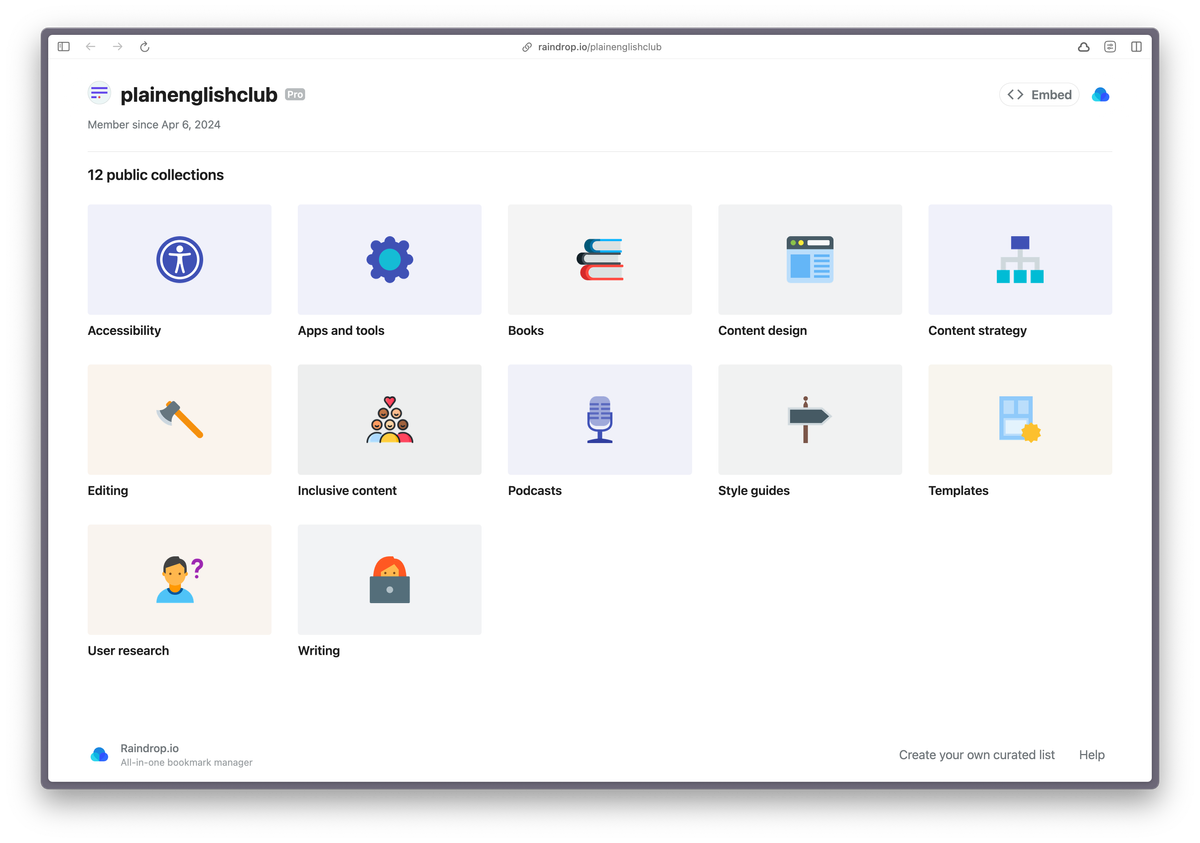Introducing Bookmarks
The launch of Plain English Club Bookmarks, the active and passive voice, subtitles and captions, and an intro to user research.

Welcome to a slightly special edition of Plain English Weekly, a newsletter for clear language champs sent by very much me, Iain Broome.
Today I am two-toots excited to share Plain English Club Bookmarks, a free and ever-expanding collection of clear language resources. Actually, it covers other topics too, like content design, user research and inclusive content.
This is the first product (let's call it a product) beyond the newsletter as I try and build out the Plain English Club website. Earlier this week, I shared it on LinkedIn and have been mildly flabbergasted by the response.
I'm not going to bother you with any more information here. You can learn all about Bookmarks and start exploring via the magic button below.
Oh – feedback! Please do let me know what you think and where you feel it can be improved. And if you have resources that I should know about? Contact me and tell me about those too.
Enjoy the new links below.
Iain
Quick note to say I run exciting plain English workshops with teams from all sorts of organisations. Email iain@verymeta.com if you'd like to know more about how they work.
What’s the difference between ACTIVE & PASSIVE?
This is a pretty good explanation of how the active and passive voices are different. It's also a good example of what I (and others?) call the 'slow internet'. By which I mean it's a person with expertise just taking their time to talk through a subject with care. Nothing flashy. No jump cuts. Not scripted to within an inch of its life. It's two thumbs from me. 👍👍
Subtitles, Closed Captions, and Open Captions: What's the Difference?
This is an extremely useful post by Ben Myers:
In everyday language, terms like captions, closed captions, and subtitles all get used pretty interchangeably — and the [CC] abbreviation stands as shorthand for all of them. Within the professional transcription industry and amongst many deaf and hard-of-hearing consumers, however, these terms often have very particular meanings. Knowing the differences between them can help you pick, and better understand, the access tool that's right for your content and your viewers.
Plain language for academic & professional writing
Some good, sensible plain English advice in this piece, but you might also find goodies in the handy list of other resources it provides. Big thanks to Cheryl Cline for sharing this with me over on LinkedIn. All suggestions welcome!
User research for government services: an introduction
I've been lucky enough to take part in hundreds of user research sessions over the last few years. This guide is from the UK government's excellent service manual, but it's full of brilliant information if you are curious about user research and want to do some in your own organisation. Why would you? It's an excellent way to work out what the people you are writing for actually need.
"Even in the midst of the generative AI hype cycle, manually curated transcriptions are still the best, most accurate experience, and they are invaluable for folks who need them."
Ben Myers
New reader?
Join a growing community of 700+ plain language champs and start getting advice and resources that help you write clearer, more accessible content.